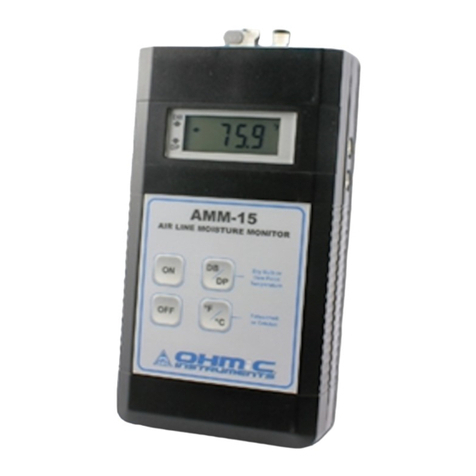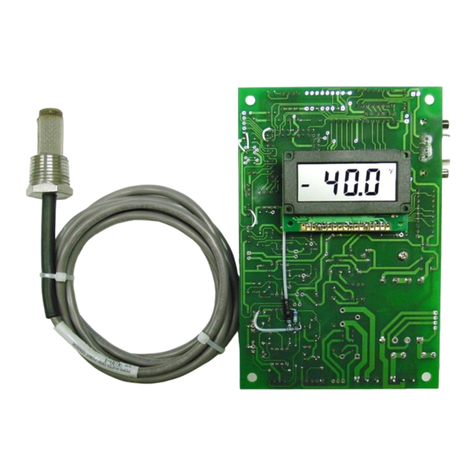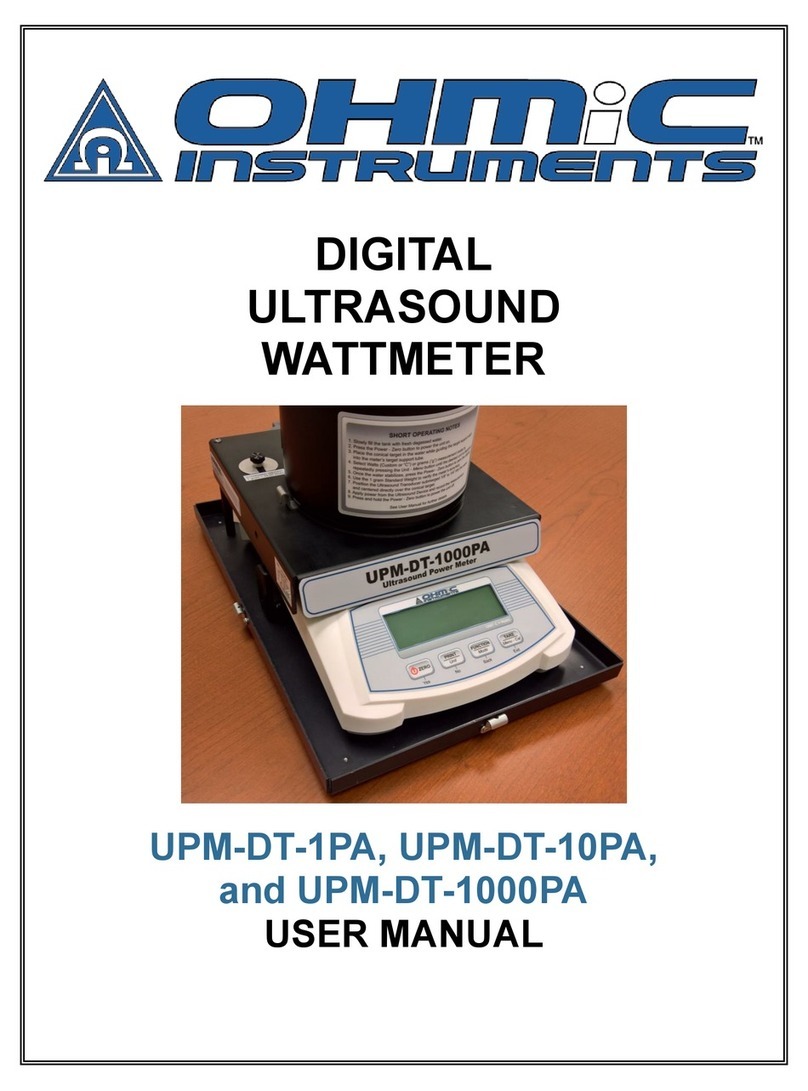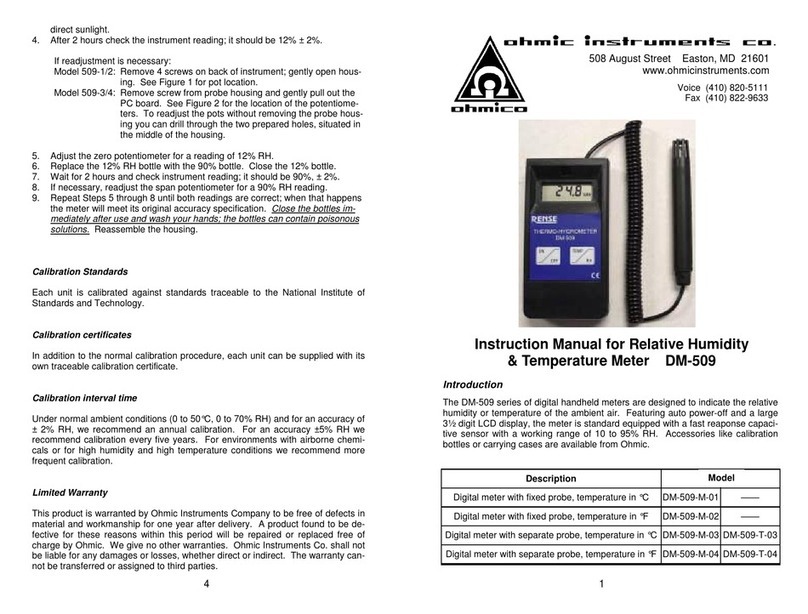5
INTRODUCTION
The Ultrasound Power Meter, Model UPM-30, is a time-
tested instrument designed to measure the ultrasonic
power output of diagnostic or therapeutic transducers up
to 30 watts using the radiation force balance method.
The UPM-30 consists of a precision mechanical balance
which measures from 0.01 to 10.00 grams, a conical tar-
get suspended on a bracket, a water tank, a transducer
support rod with clamp, and a carrying case. The trans-
ducer to be tested is center-mounted over the conical
target with the transducer’s radiating area immersed face
-down in the water medium.
The Model UPM-30 Ultrasound Power Meter measures
the average ultrasonic power by measuring the radiant
force exerted by the transducer on the conical target.
This target is coupled to the precision mechanical bal-
ance which is used to measure the gram-mechanical
force due to the ultrasonic radiation. The gram force is
directly proportional to the ultrasound power in watts
when multiplied by a constant of 14.65. Therefore, a
2.05 gram force would be equal to 30 watts of ultrasound
radiation.
The heart of the UPM-30 system is its air-filled conical
target. The weight of this target is nulled to a minimum
by using its own buoyancy. Incident ultrasound energy is
mechanically transferred from the target to the precision
balance where it is manually measured. Reflected ultra-
sound energy is absorbed by a rubber wall inside the
water test tank. This system provides a sturdy instru-
ment with good measurement accuracy and low cost.
SETTING UP THE UPM-30
1. Remove and carefully unpack the conical target
stored in the test tank. Set the target aside until the
tank is filled.
2. Slowly pour recently degassed water into the test
tank and avoid any turbulence which might produce
air bubbles. Fill the test tank to approximately ½
inch from top of tank. The water must be at room
temperature. If degassed water is not available,
sterilized or distilled water may be used; however, a
small error of approximately 3 to 5% may be intro-
duced above the 10 to 15 watt output level.
3. Immerse the conical target into the test tank at an
angle to avoid any air bubbles from being trapped
under the target. Shake the target gently to release
any attached air bubbles. Position the cone target
so it is pointed upright in the center of the tank.
4. A bracket is attached to the conical target using ny-
lon cord. Place this bracket on the upper (or lower)
hook of the precision balance. Verify that the cone
target is centered in the test tank and does not touch
the sides of the tank.
5. Release the spring lock on the precision balance.
6. Balance the scale with the target in place and no
ultrasound power applied. Each UPM-30 system is
set up and balanced at the factory before shipping.
The weight of the conical target, when suspended in
the test tank, is measured, recorded, and marked on
the balance. This is a “zero” or “null” reading and is
approximately 1.5 grams. This weight is a constant
which must be subtracted from all readings when
measuring with this system. If a new target is or-
dered, be sure to indicate this null reading so an
equivalent target can be supplied.
7. To verify the scale’s accuracy, weigh the supplied 1-
gram standard (located on the base plate below the
short instruction notes) by placing it on the cone
bracket or on one of the scale hooks and rebalancing
the scale. The reading should be 1.00 gram higher
than the null reading.
8. When the UPM-30 is not in use, store the target and
bracket inside the test tank and replace the water-
tight lid. The lid will restrain the water during transit,
reduce the absorption of air into the water, and pre-
vent water contamination from foreign particles.
Note: If the unit will not be used for an extended pe-
riod of time, it is highly recommended that the water
be removed from the tank and replaced when use is
required.
































